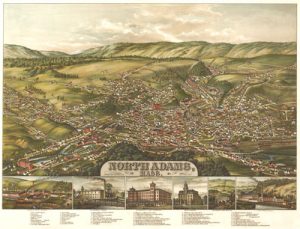Donna Gabaccia, “‘Is Everywhere No Where?’ Nomads, Nations, and the Immigrant Paradigm of American History,” Journal of American History, Vol. 86, No. 3 (December 1999): 1115-34.
In this article Gabaccia uses the topic of Italian migration historiography through her work with the Italians Everywhere project to bring into question the hegemony of nation-building in regards to the study of migrant history, particularly in American historiography. This article argues that migration historians must be historians of the world, of several nations, and of the ethnic, religious, and regional loyalties in order to sustain and motivate migration (Gabaccia, 1115).
The Italians Everywhere project revealed that the common national narrative of Italy’s migration history is fundamentally incorrect, making me wonder if the common narrative of migration in United States History cannot be debunked through our in depth analysis of specific regions migration historiographies (1112). I am also wondering if through Patrick and I’s project we may be able to tell a story of the Granite State’s migrant history as having an impact on nation building throughout history, or vice-versa. Did migrant groups in the Granite State place more of their culture into the American “Melting-Pot” or was their culture lost through a quick assimilation into American society?
Adam Goodman, “Nation of Migrants, Historians of Migration,” Journal of American Ethnic History, Vol. 34, No. 4 (Summer 2015): 7-16.
The topic of Adam Goodman’s article is that of the United States being referred to throughout history as A Nation of Immigrants. Goodman argues that this phrase and others like it reinforce inadequate and inaccurate stereotypes of immigrants and of America (Goodman, 7). As I read Goodman’s article I am tempted to focus on those non-European immigrant groups that were or are present in New Hampshire, for in the past these groups have been depicted as secondary actors (8). In this article I also found tips for being a historian of migration such as, “utilizing multiple methods, rely on sources in multiple languages, and incorporate an interdisciplinary approach that, when necessary, pulls from sociology, anthropology, geography, political science, and legal studies” (8). On top of that, in this article as well as Gabaccia’s article I notice the praise on historians who focus on migration rather than immigration so as not to reinforce the nation of immigrants myth or privilege the history of one-way migration and community formation (9). Lastly, I take from these articles the advice to study through a transnational lens when conducting my own research.
